December 7, 2021
By Michael Elizabeth Sakas
Ignacio residents, Marcella Gomez and Bernard Candelaria fill up thier water tanks at the Southern Ute Indian Tribe’s water distribution center south of Ignacio, Colorado. Long time Ignacio resident, Gomez, runs a small gift shop from her home south of town. (Jeremy Wade Shockley for CPR News)
Lorenzo Pena pulls off the highway and into a drive-through water distribution center on the Southern Ute Indian Tribe reservation in southwest Colorado. He parks his truck and connects the empty tank it’s hauling to a large hose and thousands of gallons of water quickly rush in.
Pena, who works for the Southern Ute Indian Tribe’s hauled water program, has made this trip countless times to deliver water to tribal members who don’t have clean water piped to their homes from the local utility.
“It’s pretty dry around here,” Pena said. “So if people have wells, they’re real slow or the wells aren’t really producing much water.”
If a family on the reservation doesn’t use well water or lives outside of town, they have to haul water to fill their cistern to flow through their home.
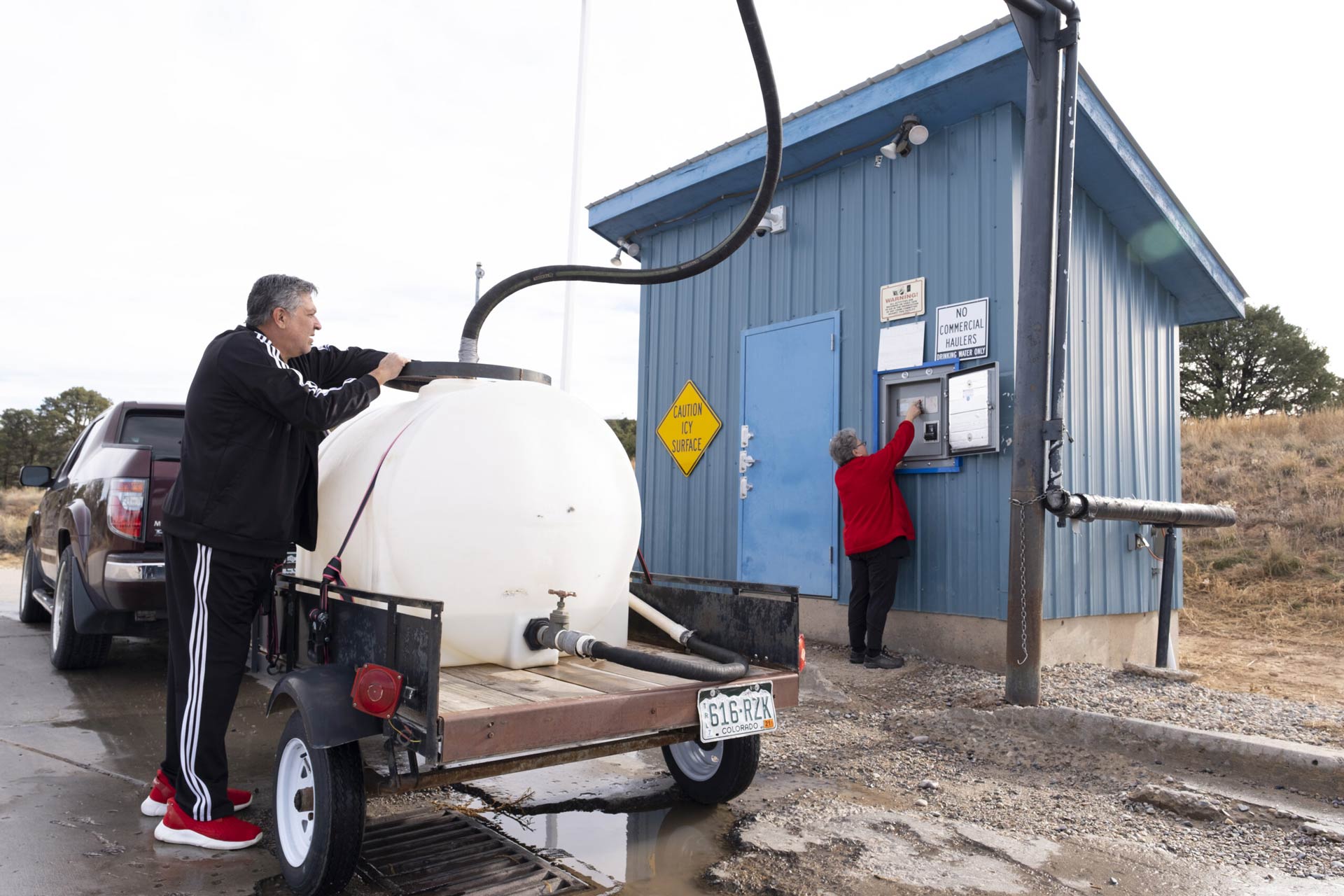
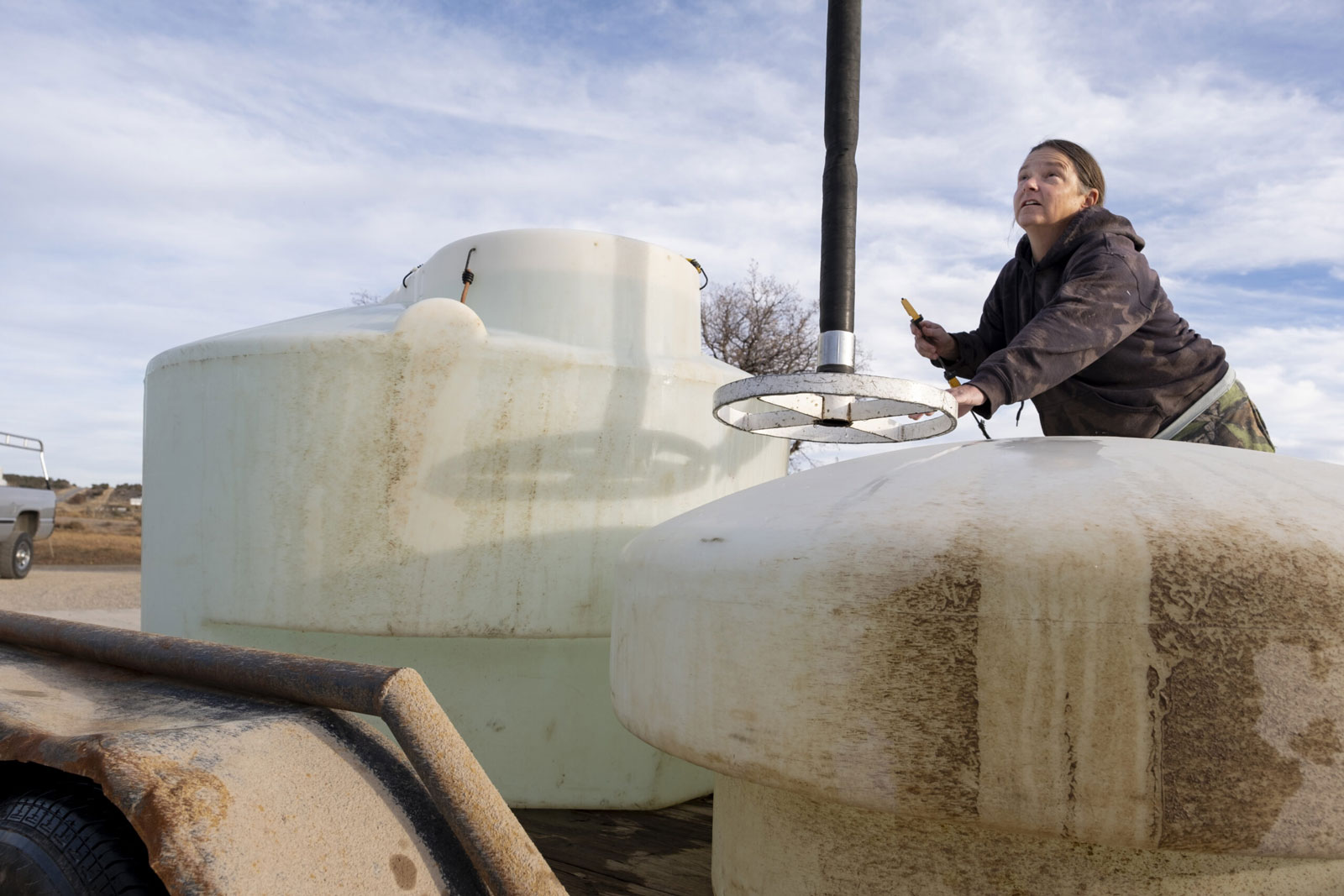
Top, Ignacio residents, Marcella Gomez and Bernard Candelaria fill up their water tanks at the Southern Ute Indian Tribe’s water distribution center south of Ignacio, Colorado. Long time Ignacio resident, Gomez, runs a small gift shop from her home south of town. Bottom, La Plata county residents fill up their water tanks at the La Plata Archuleta Water District’s bulk water fill station off of Highway 160. Local resident, Sharon (last name undisclosed) fills up a set of tanks, trailered by a pickup truck, to furnish water to her nearby home. (Jeremy Wade Shockley for CPR News)
The Colorado River is the lifeblood for the Southern Ute and dozens of federally recognized tribes who have relied on it for drinking water, farming, and supporting hunting and fishing habitats for thousands of years. The river also holds spiritual and cultural significance. Today, 15 percent of Southern Utes living on the reservation in southwest Colorado don’t have running water in their homes at all. That rate is higher for other tribes that rely on the Colorado River, including 40 percent of the Navajo Nation.
Native American households are 19 times more likely to lack piped water services than white households, according to a report from the Water & Tribes Initiative. The data also show Native American households are more likely to lack piped water services than any other racial group. Leaders of tribes who depend on the Colorado River say the century-old agreement on managing a resource vital to 40 million people across the West is a major factor fueling these and other water inequalities.
State water managers and the federal government say they will include tribes in upcoming Colorado River policymaking negotiations for the first time. Some tribal leaders view those promises as lip service and sent a letter to Interior Secretary Deb Haaland in November asking for legal changes to ensure tribes are included in the negotiations.
The tribes are a powerful voice to ignore. Collectively, they own rights to about a quarter of the water that flows through the Colorado River — a share that exceeds what some states have and includes legally superior senior water claims. The tribes’ slice of the river is only expected to grow as climate change and demand reduce the amount of water available to states whose newer water rights have less legal authority.
Because of a lack of funding and infrastructure, the tribes aren’t using all of their Colorado River water — but they want to. Like any government in the southwest, tribal nations see water as a cornerstone of growing their communities and local economies while supporting the livelihoods and well-being of their members. Some communities in the West are halting development because they don’t have the water to sustain it.
If tribes were to use the full amount of the Colorado River rights they control, that could mean less water for some states already dealing with first-ever water cuts due to historically low levels in Lakes Powell and Mead.
In 1922, seven states in the Colorado River basin — Colorado, Utah, Wyoming, New Mexico, Arizona, California and Nevada — signed an agreement, called the Colorado River Compact, on how to “equitably” divide up the river to speed up development across the West.
The execution of this Congressionally sanctioned deal paved the way for massive federal investment in water infrastructure that has mostly benefited the states. Federally funded dams were built to create Lakes Powell and Mead so the states could manage the river’s flow to help uphold the compact’s rules.
Native Americans weren’t considered U.S. citizens when the Colorado River agreement was signed. Tribes were excluded from this agreement and had no direct say in how the water they relied on for millennia was divided — a racial injustice tribal leaders say continues to hurt their members.
The agreement left unsettled how much water tribes could take from the Colorado River, and many tribes throughout the river’s basin are still fighting to resolve this issue today. The U.S. Supreme Court provided some clarification in the 1960s when it adopted a standard that reservations are entitled to as much land as they could irrigate. Before this, tribal water rights were largely ignored, as Lakes Powell and Mead filled with water meant for the states to use.
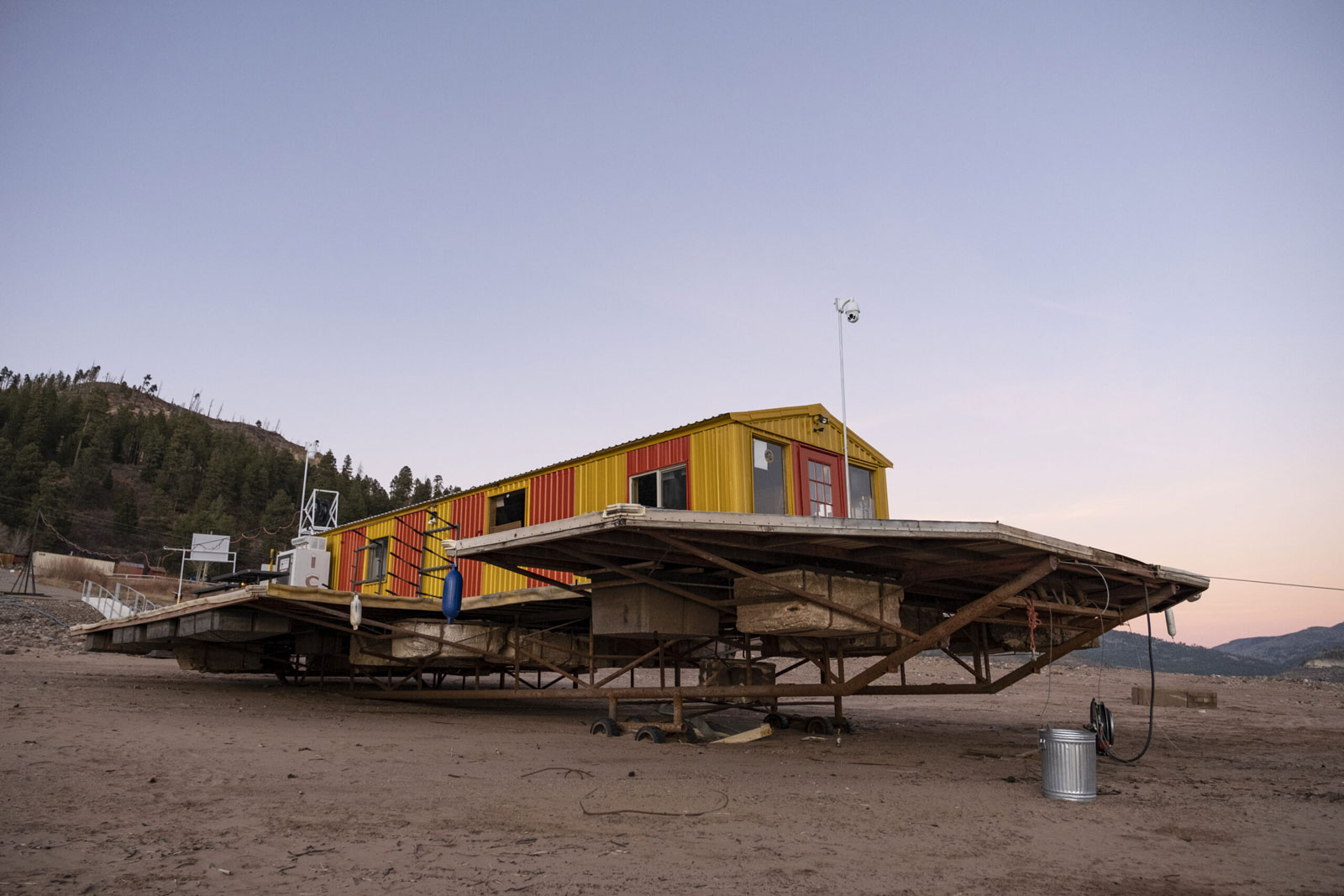
The Vallecito Marina dock sits beached on dry land, a testament to the historic low water levels as the 2021 season comes to a close in November. The Southern Ute Reservation downstream depends on the water from the Vallecito Reservoir each season. Fed by winter snowpack, this critical reservoir has hovered at below average levels in recent years. (Jeremy Wade Shockley for CPR News)
That has blocked tribal governments from accessing federal funding to build their own reservoirs, pipes and treatment facilities to direct clean water to their citizens.
The Colorado River is drying up from climate change and the growing demand on a river system that was over-allocated from the start. Drought conditions forced states to negotiate a new set of Colorado River rules in 2007. The 30 federally recognized tribes in the basin were also excluded from this process.
Those drought rules are set to expire, so the states need to agree on a new way to best manage the river by the year 2026. The tribes, now recognized as sovereign governments, are calling for equal power in the upcoming policymaking process — the results of which will shape how the river is managed for years.
So far, the tribes only have promises that they’ll be included. That’s not enough for many tribal leaders who want a legally granted seat at the negotiating table.
In the letter to Interior Secretary Deb Haaland, a coalition of 20 tribes said that their involvement in ongoing decisions about the Colorado River is necessary due to the effects of the decades-long drought. The letter calls for the U.S. government to ensure that the tribes are included in developing and carrying out the policies and rules that govern how the Colorado River is managed. And tribes want the next management framework to “recognize and include support for tribal access to clean water.”
Pena has delivered water on the Southern Ute Indian Tribe’s reservation for a few years. He said he was fortunate to grow up with a well, so his family didn’t have to haul water. Other people in the community can’t afford delivery and have to drive miles with their own trucks and water tanks to get what they need.
If the weather is bad, or a truck breaks down or the supply runs out before a family can make another trip, families might go days without clean water. Without a reliable and easily accessible clean water supply, these households struggle to shower, clean their homes or prepare healthy food.
Lorelei Cloud, a member of the Southern Ute Tribal Council and a leader of the Water and Tribes Initiative, grew up on the reservation in a home without running water. At an October law conference at the University of Colorado Boulder, Cloud shared her family’s experience of filling up water tanks at her uncle’s home with his garden hose. Cloud’s family had to ration their supply to ensure it lasted the whole week.
“A few times, it didn’t last for that week. And we actually got water from the irrigation ditch in front of the house, boiled that and we used that,” Cloud told conference attendees while tearing up.
When she was 12, Cloud moved to a new home that did have running water, but it was contaminated with methane, which can occur naturally or enter a well from nearby oil and gas development.
“It wasn’t just in the water, but it made the whole house smell like methane. And that ended up becoming a normal part of our life,” she said. Cloud’s son still lives in that home, and he recently ran out of water. It’s unclear whether the well dried up or the pump stopped working, but Cloud said her son has had to take showers at her home while they figure out the problem.
Heart said the federal government and states need to apply the government-to-government tribal consultation policy to river negotiations since those actions and decisions will have a substantial and direct effect on tribes.
“Everybody is growing, population-wise. And their needs are growing,” Heart said. “You’ve got to include tribes in that too, because they too are part of that equation.”
Heart said these consultations could lead to other solutions to better manage water in the Colorado River better. One possibility is where tribes sell leases for farm irrigation water to increase reservoir levels and use the proceeds to help pay for the operation and maintenance of aging water infrastructure. One of the most significant issues on the Ute Mountain Ute reservation is the cast iron and clay pipes installed in the 1950s that are clogged with sediment and tree roots, Heart said.
Homes in the town of Towaoc on the reservation didn’t get indoor plumbing until the 1980s. Heart remembers his family driving 15 miles to Cortez to do laundry and take showers when he was younger.
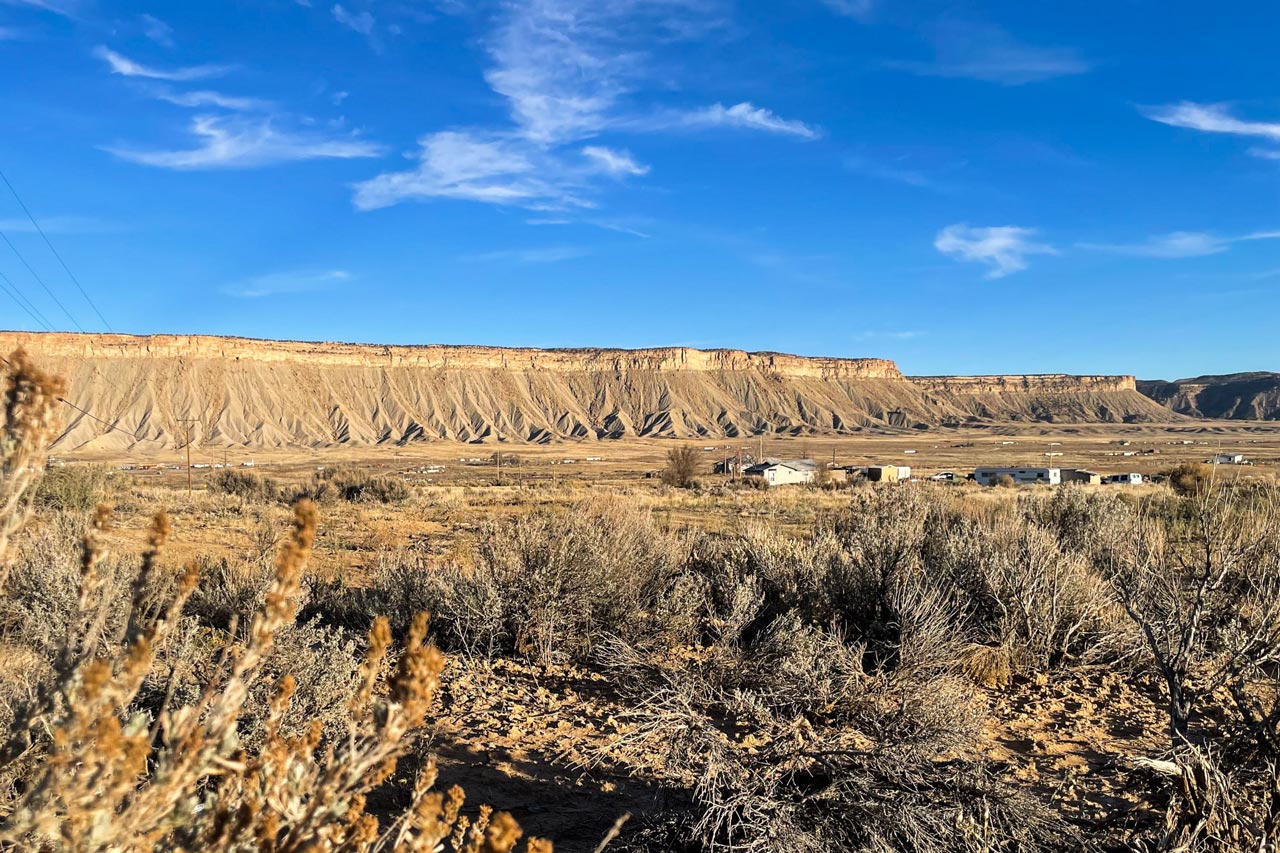
A home on the Ute Mountain Ute Indian Tribe reservation in southwest Colorado on November 18, 2021. The area is in extreme drought and little snow has fallen this fall. (Michael Elizabeth Sakas/CPR News)
Desperate to get water to the town, the tribe negotiated with the federal government. The Ute Mountain Utes gave up senior water rights dating back to 1868 for funding to build McPhee Reservoir. It’s filled with 1988 junior water rights, which are susceptible to cuts during drought. Heart feels the deal was wrong.
“We just got backed into a corner, take it or leave it,” Heart said.
It’s difficult to know what might have happened over the last 100 years if the tribes were included in the negotiations of the 1922 compact. Heart believes the Ute Mountain Ute Tribe wouldn’t have been in a position where it needed to give up valuable water rights for access to clean water.
With the worsening decades-long megadrought, the water supply in McPhee Reservoir is dropping. Heart said the tribe is only getting about 10 percent of their share of water, which has cut into farming revenue needed to pay for the operation and maintenance costs of the reservoir itself.
Looking out his office window, Heart reflected on the lack of snow. Much of the reservation is in extreme drought. “It feels like summer here, and we’re in November. If I remember, when I was a child, we already had snow on the ground.”
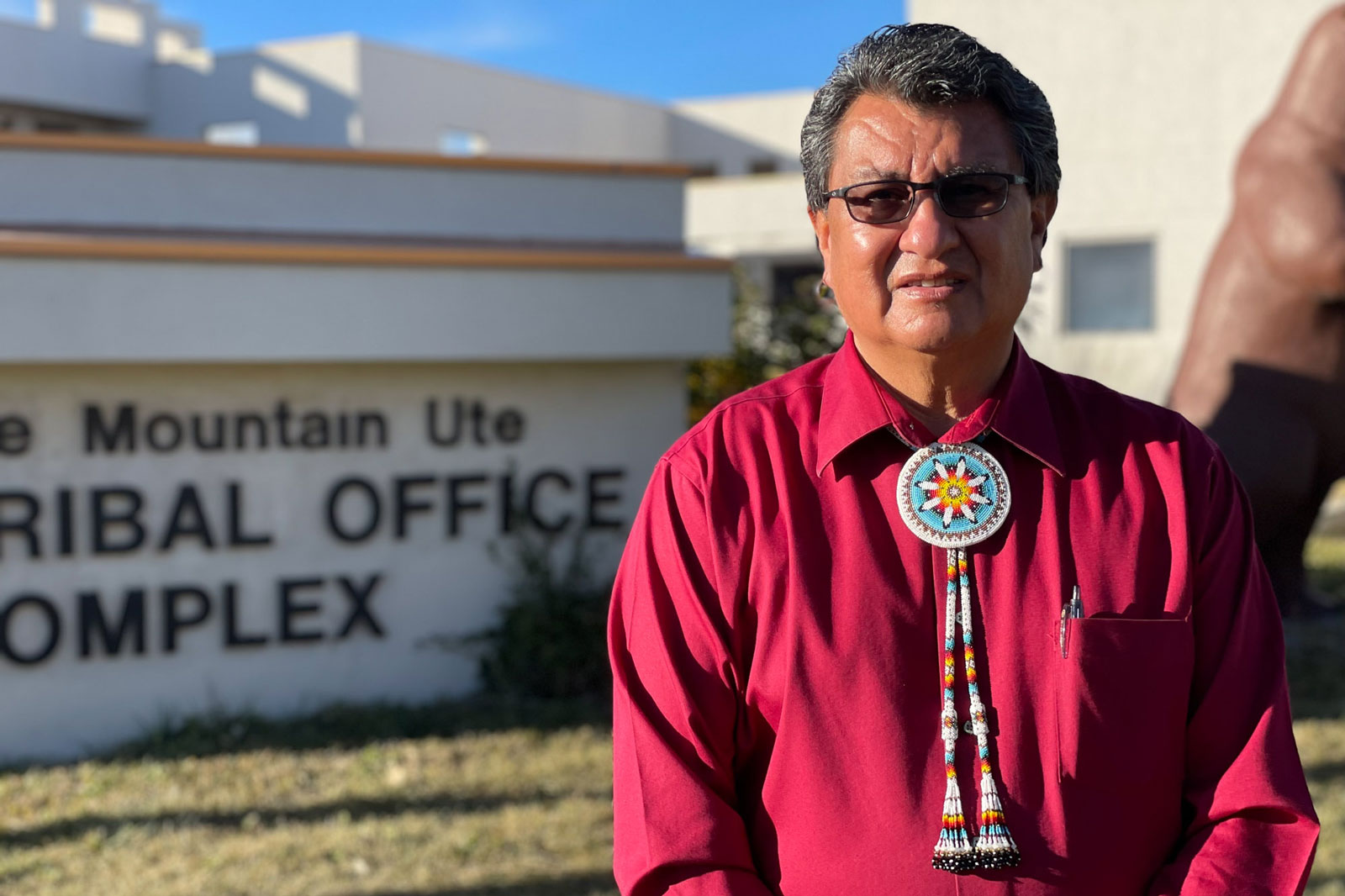
Chairman Manuel Heart of the Ute Mountain Ute Indian Tribe in southwest Colorado stands in front of the tribal office complex on November 18, 2021. Heart wants tribes to be included in Colorado River negotiations, so they can have their voices heard on the lack of access to clean water on reservations. (Michael Elizabeth Sakas/CPR News)
Heart said one way to make tribal voices official in river negotiations would be to appoint a tribal representative on the Upper Colorado River Commission, which was created through Congress and includes water officials from Colorado, Utah, Wyoming and New Mexico. Heart said federal legislation is needed to amend that to include a spot for the tribes.
Heart is hopeful that representation in the negotiations will mean that all tribes in the basin will finally have their water rights quantified. Some tribes, like the Navajo Nation and Hopi Tribe, still don’t know just how much water they can use because of the way the U.S. government sets aside water for each individual reservation. Many of these water rights date back to when the reservation was established and pre-date the Colorado River agreement, giving them a valuable legal distinction because they cannot be curtailed during a drought.
According to a policy brief from the Getches-Wilkinson Center for Natural Resources, Energy and the Environment at CU Boulder, 22 of the 30 federally recognized tribes in the Colorado River basin collectively own the rights to use around 25 percent of the Colorado River’s annual flow. Twelve other tribes still have unresolved claims, which will likely increase the amount of water tribes can use as those rights are settled.
Despite holding legal rights to a quarter of the water in the Colorado River, tribes can’t use their full share due largely to a lack of funding and water infrastructure. As tribes work to develop and use their water rights fully, states are concerned it will mean less water for their use.
“Because tribal water rights tend to be senior, they’re going to slot into the system and kind of bump back a whole bunch of existing water rights that are being used,” said Anne Castle, a senior fellow at the Getches-Wilkinson Center and the former assistant secretary for Water and Science at the U.S. Department of the Interior. “Those water rights will lose priority.”
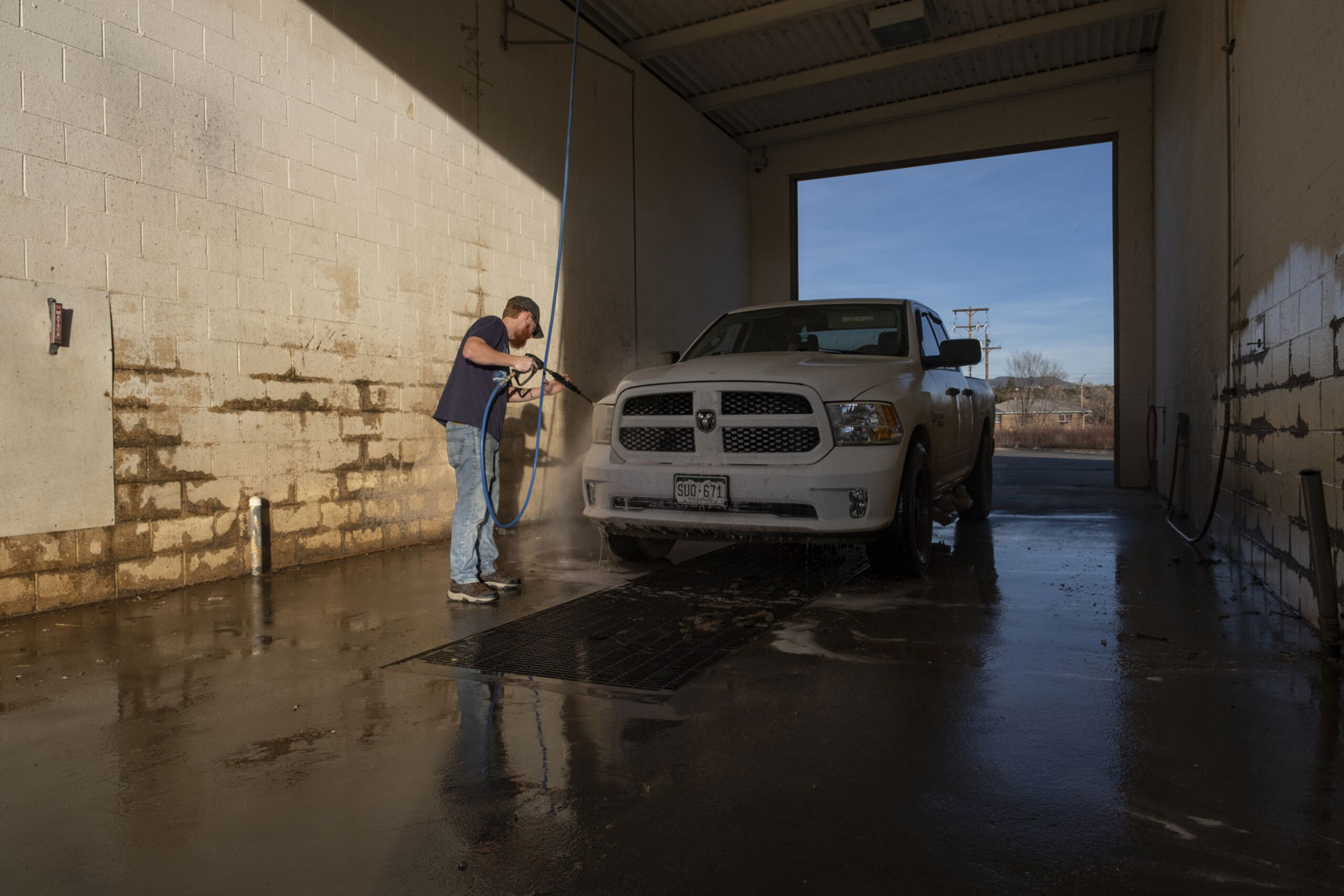
Chris McCort of Ignacio, Colorado scrubs down his Dodge truck at the HI PERFORMANCE Car and Truck Wash, one of a few privately owned car washes which operate within the Southern Ute Reservation. (Jeremy Wade Shockley for CPR News)
Castle said determining how much water tribes control is crucial for the tribes and provides certainty for all water users in the system. Including tribes in river-management discussions would also help tribes prioritize spending $3 billion in funding from the bipartisan infrastructure bill earmarked for water projects, she said.
Castle said that the law of the river hasn’t historically dealt with things like access to clean drinking water. Including Tribal representation could change the tenor of the overall discussion and “expand the universe of issues that need to be dealt with,” she said.
“When you bring tribal interests to the table, then those issues are elevated and become a part of the discussion. Because that’s obviously a critical consideration for many of the tribes along the river,” Castle said.
Studies show a higher infection rate in communities with limited access to running water, which disproportionately affects tribal communities, said Bidtah Becker, a member of the Navajo Nation and an associate attorney for the tribe’s utility authority who worked on a clean water report for the Water and Tribes Initiative.
“It just felt like this is the moment to shine a light on this issue,” she said. “It just seemed that the collective response was so different than it had been in the past.”
One of the ways tribes have funded water projects is through money from legal settlements with states and the federal government over their water claims, which can take decades to finalize. It took more than 30 years for the Navajo Nation to settle some of its water rights. Becker said people often ask about the connection between water rights and water development.
“They’re interconnected, because you need funding to develop your water rights. But if you don’t have a fully resolved water right, it can be challenging to get funding [to develop it],” Becker said. The Navajo Nation still has unresolved water rights.
Becker was surprised that the infrastructure bill included funding for tribal water projects — enough, she said, to fund an entire backlog of water projects that has been growing since the 1980s. The money could mean tribes don’t have to wait for settlements to fund infrastructure projects to put their water rights to better use.
The lack of clean water access for tribes is rarely discussed because it’s a “dignity issue,” Becker said. “It’s embarrassing to say, ‘I can’t get up and shower in the morning.’” That’s especially true for younger tribal members who go to school with flushable toilets and spend time with students who smell like soap and shampoo, she said.
“If [this funding is implemented effectively], we could have a whole generation of Indian folks who are not going to have the disadvantages that their parents had. Or even their older brother or sister,” Becker said.
Becker acknowledges that it can be “technically challenging” to figure out how clean drinking water fits into Colorado River negotiations. Still, she said equity needs to be considered in “everything we do.”
She said since the river agreement was signed before many Native Americans had the right to vote, the states and the federal government are still grappling with the concept of, “Who are the tribes?”
“What are tribal people? How do they fit into our system or not? I think they were unresolved then, and I think that’s what we’re still trying to resolve to this day,” Becker said.
Daryl Vigil, a member of the Jicarilla Apache Nation and the tribe’s water administrator, said the tribe was living off government-issued rations on a reservation that wasn’t their traditional homeland when the Colorado River Compact was signed, a decade and a half before the tribe even organized as a formal government and adopted its constitution.
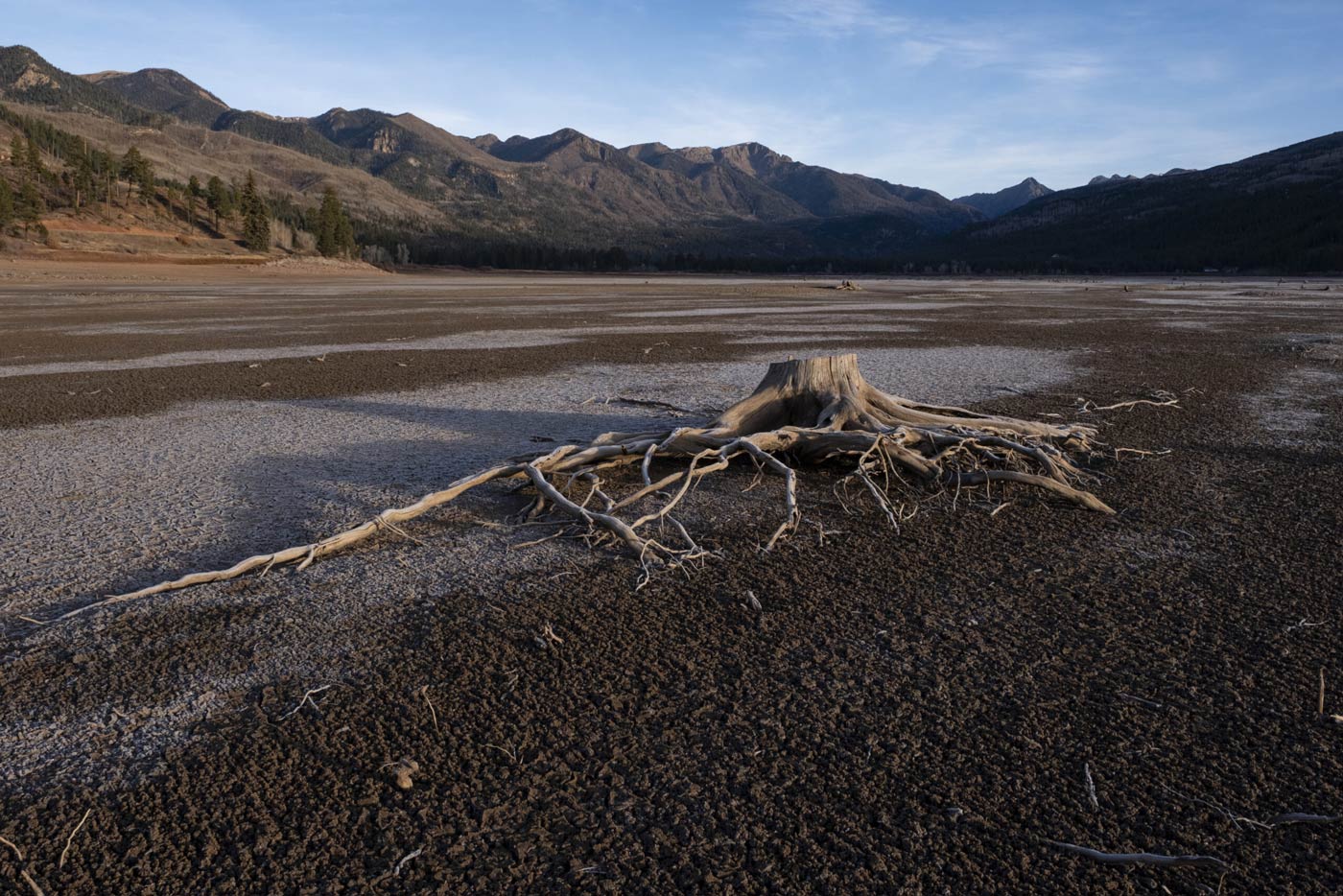
Cracked earth, a dry lakebed signal the end of summer. The Southern Ute Reservation downstream depends on the water from the Vallecito Reservoir each season. Fed by winter snowpack, this critical reservoir has hovered at below average levels in recent years. (Jeremy Wade Shockley for CPR News)
He said it was a “call to arms” in 2012 when the Department of the Interior released a study that left out tribes in a calculation of water supplies and demands in the basin. Tribes pushed for an additional study, which resulted in the 2018 Colorado River Basin Ten Tribes Partnership Tribal Water Study Report. It recognizes the large portion of Colorado River Rights the tribes hold and the potential effects on the river system if tribes start to use these rights in full.
Since the tribes are sovereign governments, Vigil said they should be invited to a “sovereign table that doesn’t exist” to discuss how the Colorado River is managed. He said instead, the fallback is that states or the federal government act as a trustee to represent and protect tribal water interests, which “just hasn’t happened historically.”
The tribes have been told they will be included in the upcoming negotiations, which are likely to happen over the next two years. However, Vigil said it’s lip service until the federal government fulfills its promise to engage tribes as equals to the states on Colorado River management decisions.
“Anything that goes on right now in terms of commitments, promises, whatever you want to call it, is kind of meaningless because it’s not backed up by the existing law and policy,” Vigil said. Until new policies are put in place or the law is changed, Vigil continued, there is nothing to ensure the tribes are included.
It’s unclear what tribal participation might look like. Becky Mitchell, the director of the Colorado Water Conservation Board, said states should have a “back and forth” discussion instead of dictating terms. Mitchell is involved in the clean water for tribes initiative and said her office has started working with the tribes on Colorado River issues leading up to the next round of formal negotiations. Mitchell urged her counterparts in other states to do the same.
“I think it’s incredibly important when we talk about trust in government, that we have to be open to different ways to do things than we have before,” Mitchell said. “We have to figure out, how do we create a more certain future for everyone in the basin?”
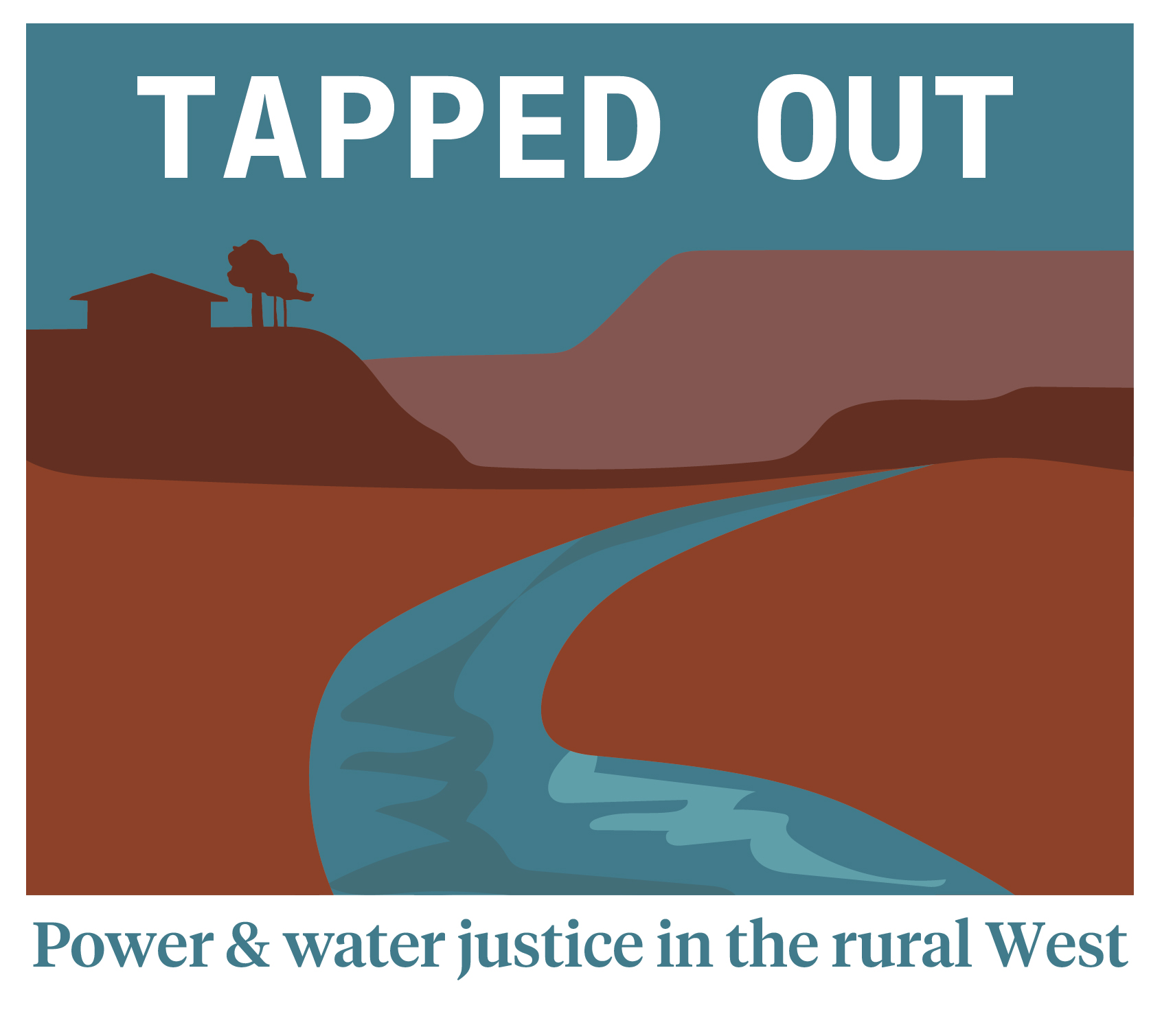
This piece is part of a collaboration that includes the Institute for Nonprofit News (INN), California Health Report, Center for Collaborative Investigative Journalism, Circle of Blue, Colorado Public Radio, Columbia Insight, The Counter, High Country News, New Mexico In Depth and SJV Water. The project was made possible by a grant from the Water Foundation with additional support from INN and the Fund for Investigative Journalism (FIJ). For earlier stories in the Tapped Out series, click here.